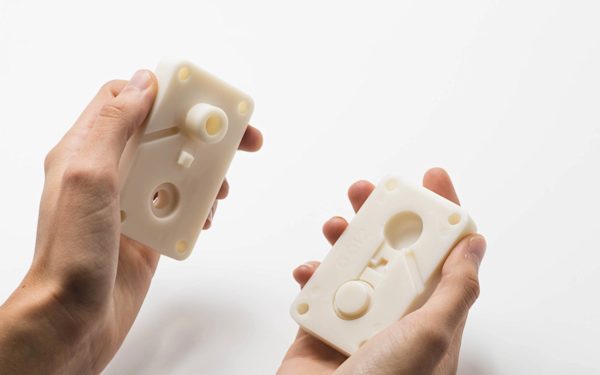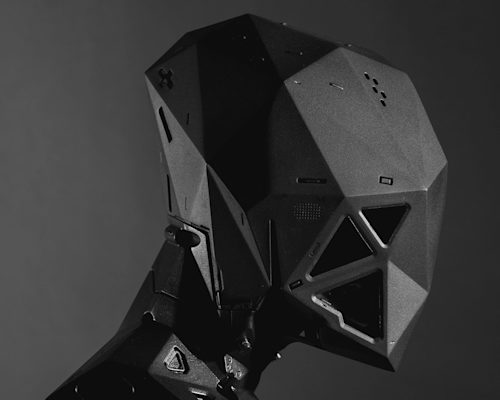3D printing molds is an application that doesn't get the attention it deserves, it's not the sexiest thing in the world but the benefits speak for themselves. We profiled MGS Mfg. Group, a leading provider of optimized manufacturing solutions for high precision plastic products and looked how they're using rapid tooling. MGS Mfg. produce over 250 high quality, high-cavitation injection mold tools annually and utilize nearly 300 molding machines to produce molded products for a variety of industries.
Given the ever increasing demand by customers to introduce products to market quickly, coupled with increasing design complexity and manufacturing volume, businesses like MGS are under extreme pressure to help their customers successfully design, develop and test products faster and at lower costs.
Developing new products typically involves several prototype iterations often with only minor design changes. Continually remaking prototypes for each iteration is expensive and can cause a significant delay when wanting to introduce parts quickly to the market. This challenge is especially important when working in healthcare, where products need to be ready for testing as soon as possible due to lengthy regulatory acceptance procedures, which can take as long as three years.
Traditional tooling takes too long
For MGS finding new and innovative ways to improve their injection mold tooling operations is essential. MGS typically produces tools through the use of high-performance CNC machines. Highly detailed and intricate parts often require complex machining procedures resulting in long production times. The introduction of new manufacturing techniques, such as 3D printed tooling using stereolithography SLA printing is becoming critically important to MGS because it allows for earlier and increased involvement in the customer’s preliminary design phases. This means catching problems early and making faster iterations.
Rapid tooling helps make high-performing prototyping tools a reality. Traditionally 15 days to create a quality tool is acceptable but thanks to 3D printing you can do it in less than a week at the half of the total cost. This is down to the cost of materials, the ability of SLA technology to create complex geometries and the amount of time it take to do so.
 3D printed injection mold alongside an ABS part it created
3D printed injection mold alongside an ABS part it created
When to use rapid tooling
- Part size is relatively small, less than 127 mm (5 inches)
- Part design still needs iterations
- When decreasing time to market is a priority
- Verification of final design requires production plastic
- Quantity of parts is low (between 50 and 100 parts)
Shots
Kevin Klotz who works in Quality Assurance at MGS describes the challenges they face when creating molds at MGS, "The challenge we face is formidable. We strive to produce rapid tooling that makes it possible to mold parts in the actual molding material of our customer’s choice, quickly and at lower total cost. In many cases, additive materials model the properties of injection molding materials reasonably well so there will always be cases in which prototype parts are most economically produced in today’s modern 3D printers".
The costs of tooling are always a key part of deciding what manufacturing process you are going to use for a new product, Kevin adds "Our key customers seek the path that best ensures both performance of their products in the field and leads to a final part design that facilitates the lowest possible production tooling cost without compromising quality. Prototyping in the actual molding material best achieves that dual goal". Using rapid tooling means MGS can offer a wider variety of solutions when companies are looking to create short series production runs without the cost of creating expensive tools.
In general most 3D printed tooling produced parts successfully in two-digit quantities when the molding material was a member of the polyolefin family. However, significant performance differences arose when the molding materials tested were those of the high-engineering grades. In these cases, Somos PerFORM outperformed competitors with inserts successfully providing molded parts in shot quantities exceeding 100. The majority of the competitive additive manufacturing material inserts were breaking before producing even 25 parts. See a more detailed comparison of 3D printed injection molding materials on our Knowledge Base.
A close up of a 3D printed mold with the part still in it.
Compatible Materials
- Polyethylene (PE)
- Polypropylene (PP)
- Thermoplastic elastomers (TPE)
- High impact polystyrene (HIPS)
- Glass-filled PA
- ABS
- Polycarbonate (PC)
Single Tool vs Multiples
, “MGS can now help service customers worldwide. Previously, one of our customers was managing to produce between 2 and 25 prototype parts before the tools they printed failed, this while molding a polyolefin material. The customer needed significantly more parts to carry out effective testing and so they had to produce multiple tools. Somos® PerFORM can print a single tool that is capable of producing far greater quantities of polyolefin based parts — representing a significant time and cost saving for the customer. Moreover, a far greater offering of molding materials can now be considered by their advanced product engineers.”
Klotz explains how rapid tooling helped another customer when their parts was no longer in production, "Another MGS customer interested in Somos® PerFORM is a manufacturer whose products have lifecycles approaching 50 years. The original tools for these products no longer exist, but the equipment still needs replacement parts. For such low quantity production needs, the speed and cost of additive manufacturing tooling make it a viable option. Somos® PerFORM makes producing these parts quick, affordable and they can be made from mid to high-performance molding materials. Still, design considerations and process limitations must be taken into account."
One of the other benefits of Somos® PerFORM for rapid tooling over traditional soft tooling like P20 tool steel is the ability to easily produce critical part detail. Klotz says, “Sometimes it’s not so much the cost of a 3D printed tool insert verses a soft tool version, it is that we can’t produce the detail in the soft tool without, for instance, applying Electrical Discharge Machining (EDM) techniques. Somos® PerFORM allows for the creation of detail that otherwise could not be made and to make it in less time.”
 Protolabs Network supplier Wehl & Partner's example mold showing the intricacies you can achieve with SLA technology.
Protolabs Network supplier Wehl & Partner's example mold showing the intricacies you can achieve with SLA technology.
The benefits of rapid tooling
- Receive injection molded parts faster than traditional manufacturing methods
- Reduce qualification cycle
- Save on tooling costs for low production volume runs
- Allows for the use of hand-loaded cores
Get a quote from Protolabs Network rapid tooling service for your next project when selecting "3D printed molds" here, we'll be in touch within 24 hours.








